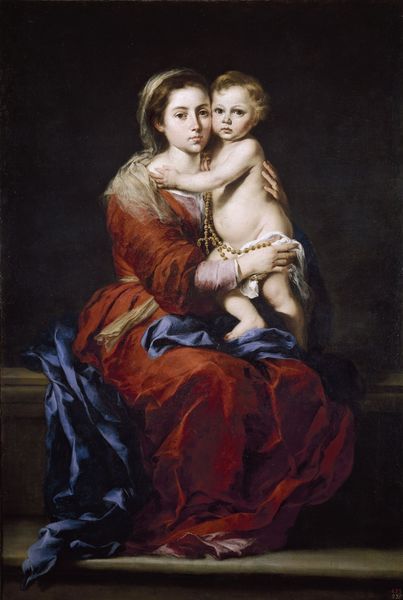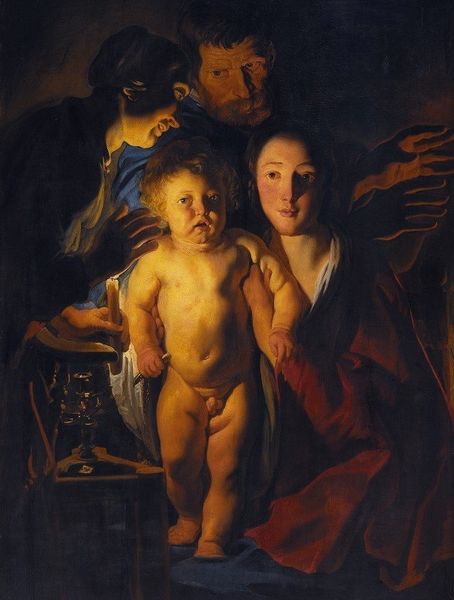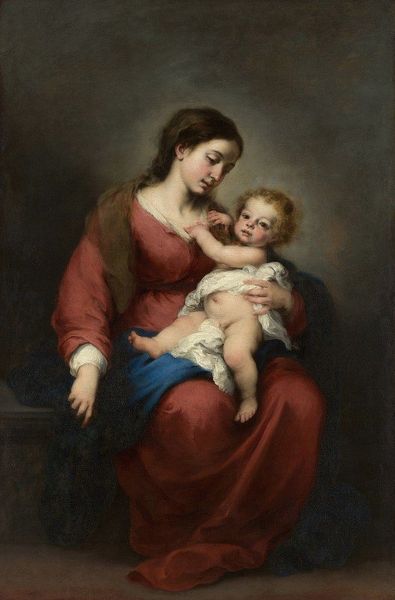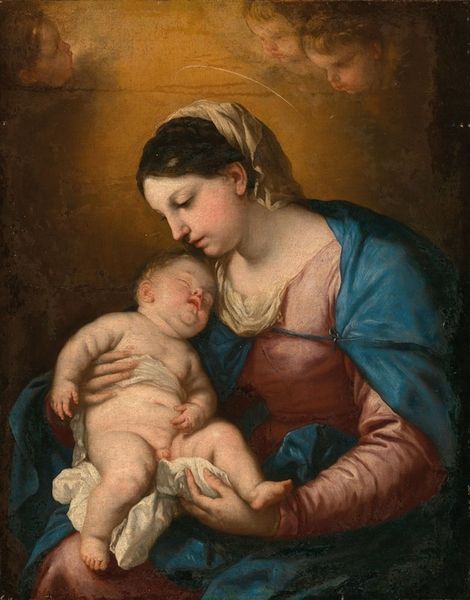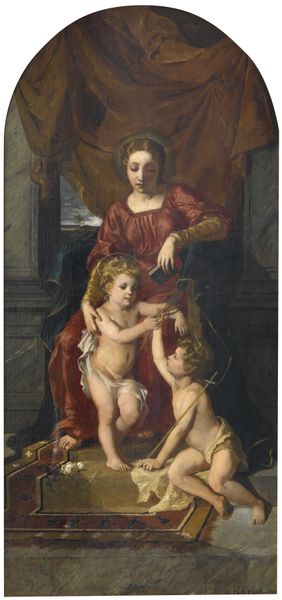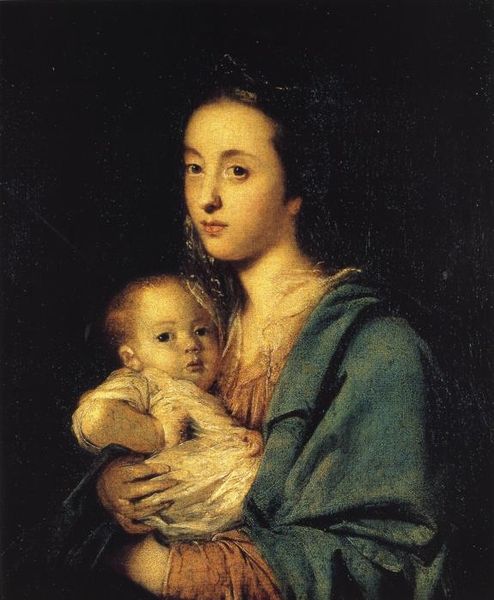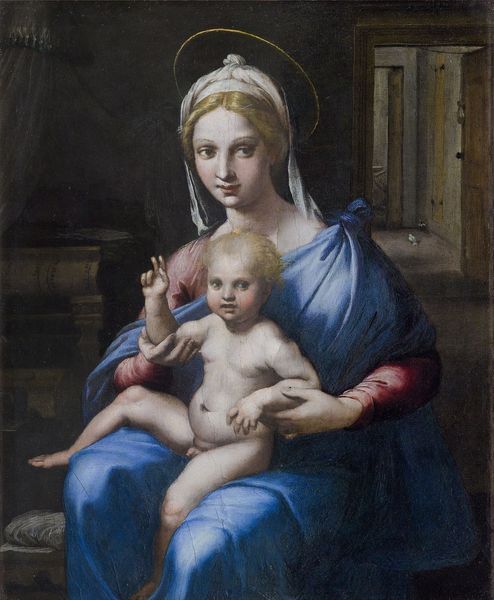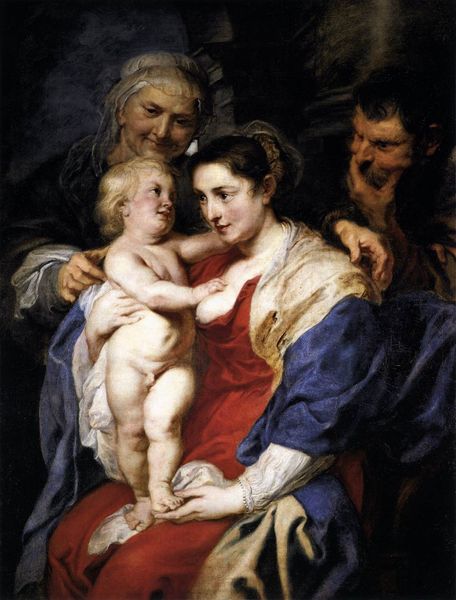
painting, oil-paint
#
portrait
#
baroque
#
painting
#
oil-paint
#
figuration
#
oil painting
#
history-painting
Copyright: Public Domain: Artvee
Editor: Here we have Rubens's "Madonna and Child," painted around 1615. It's an oil painting, and I’m immediately struck by its warmth. The colors are rich, and there’s such a sense of intimate tenderness. How do you interpret the role of the Madonna in a painting like this, particularly within its historical context? Curator: Rubens’s depiction of the Madonna, you see, needs to be viewed through the lens of the Counter-Reformation. The Catholic Church actively promoted the veneration of the Virgin Mary as a way to counter Protestant theology. Rubens, as a devout Catholic and a court painter, would have been very aware of this. Notice how the Madonna is idealized yet approachable. Does she remind you of the type of aristocratic women depicted at the time? Editor: Yes, now that you mention it, her features do seem reminiscent of noble portraits. So, it's a painting about faith, but also about power, in a way? Curator: Precisely. It's an image designed to reinforce the power and authority of the Catholic Church, subtly aligning its figures with the ruling class. But the image's impact goes further than that. The scale of production, in paintings and prints, of the image should be viewed alongside Rubens' status within courtly networks. These circulated, shaping popular devotion and reinforcing a particular vision of motherhood and religious authority across social strata. Editor: That's fascinating. It really changes how I see the painting, understanding the context in which it was created and distributed. Curator: Indeed. What begins as a simple image of mother and child then reveals itself to be steeped in socio-political intent, shaped by patronage, religious doctrine, and the burgeoning print culture of the era. Editor: Thanks. I see the layers more clearly now!
Comments
No comments
Be the first to comment and join the conversation on the ultimate creative platform.
